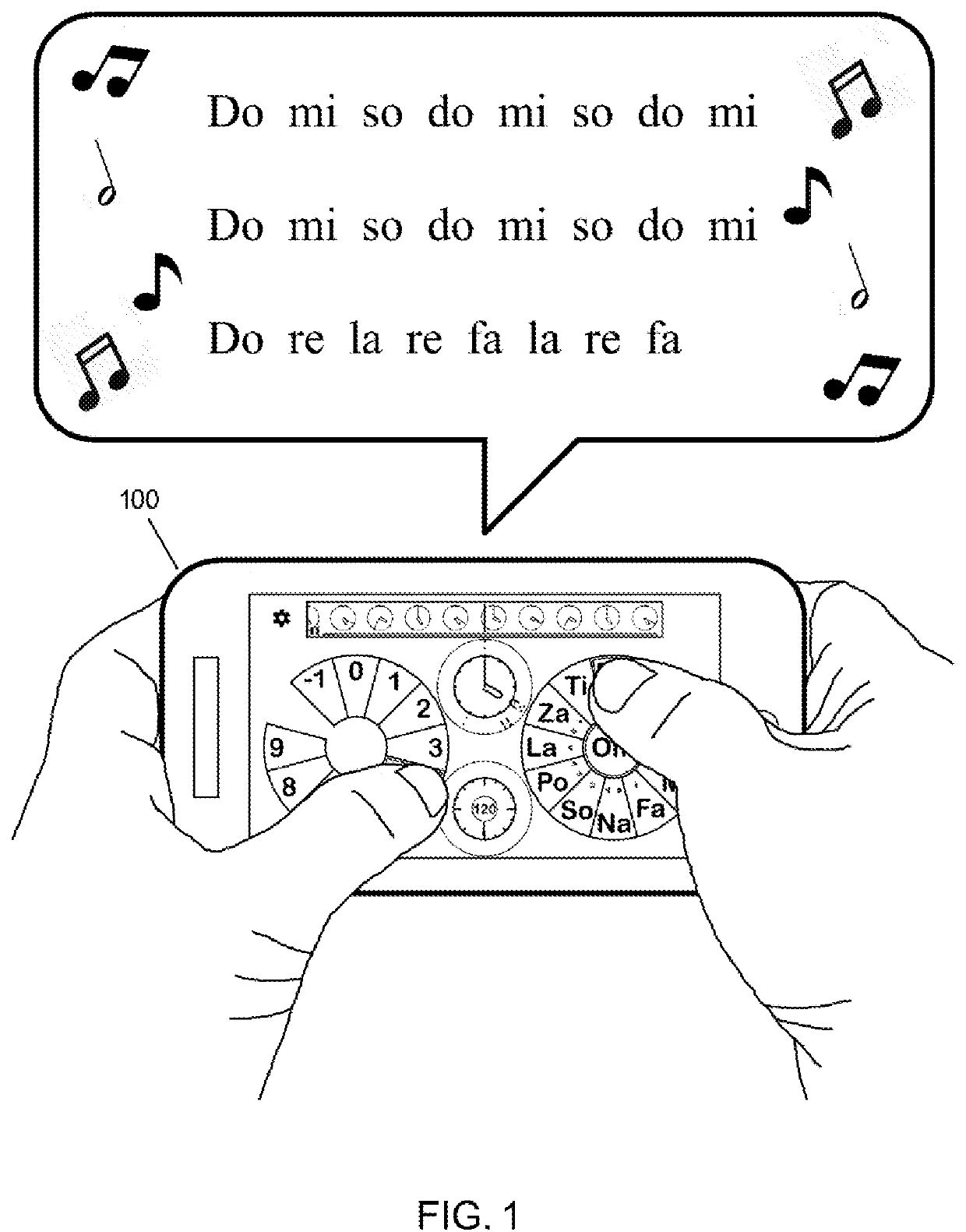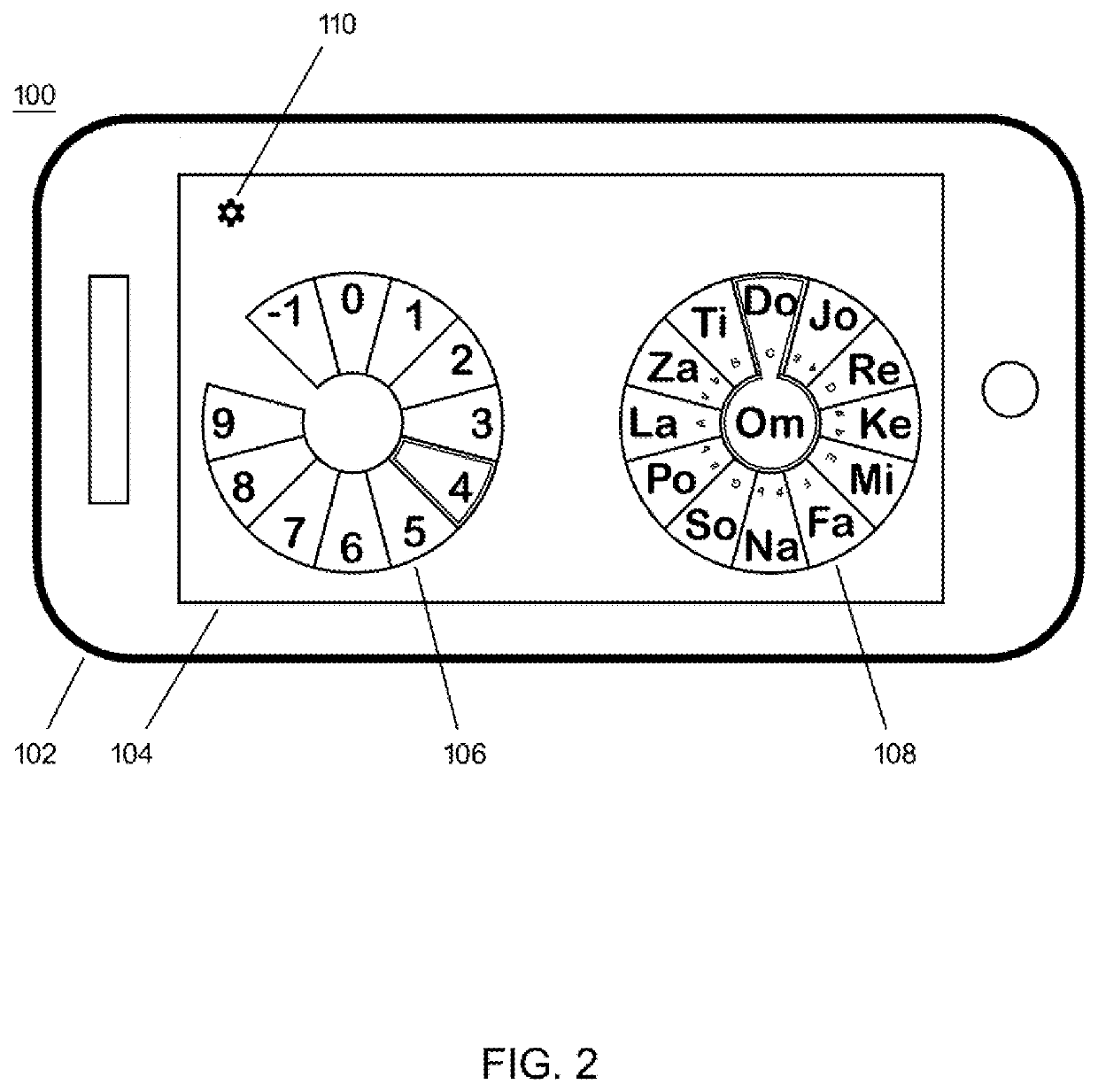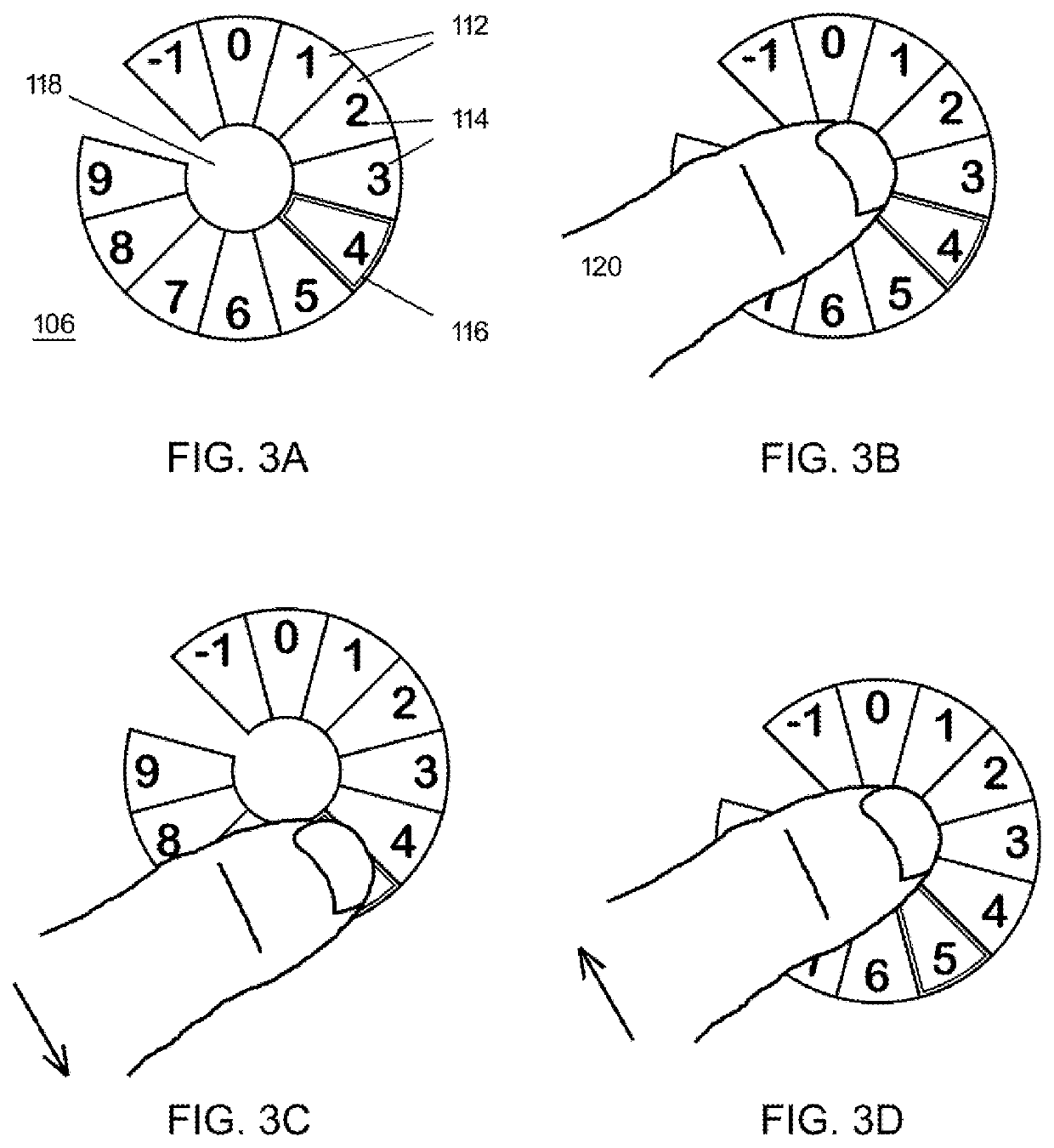Solfaphone
- Summary
- Abstract
- Description
- Claims
- Application Information
AI Technical Summary
Benefits of technology
Problems solved by technology
Method used
Image
Examples
phone embodiment
[0121]FIG. 1 shows an embodiment 100 based on a smartphone serving as electronic processing means that sings in solfege when played with the user's two thumbs. FIG. 2 shows details of phone 100 with a basic set of features, including a body 102 and a touchscreen 104 displaying octave selection keyboard or keypad 106 serving as an octave selection means, pitch family selection keyboard or keypad 108 serving as a pitch selection means, and settings button 110 serving as an option selection means. A note is played by setting the value of its octave property with octave keypad 106 and activating its pitch family key in pitch keypad 108.
[0122]FIG. 3A shows details of horomorphic octave keypad 106 including an annular arrangement of eleven contiguous octave selection keys 112. The ring of octave keys is discontinuous and has a gap at the ten o'clock position. Each key 112 is marked with an octave index 114. The eleven circularly arranged indicia 114 collectively form a discontinuous circl...
PUM
 Login to View More
Login to View More Abstract
Description
Claims
Application Information
 Login to View More
Login to View More - R&D
- Intellectual Property
- Life Sciences
- Materials
- Tech Scout
- Unparalleled Data Quality
- Higher Quality Content
- 60% Fewer Hallucinations
Browse by: Latest US Patents, China's latest patents, Technical Efficacy Thesaurus, Application Domain, Technology Topic, Popular Technical Reports.
© 2025 PatSnap. All rights reserved.Legal|Privacy policy|Modern Slavery Act Transparency Statement|Sitemap|About US| Contact US: help@patsnap.com



